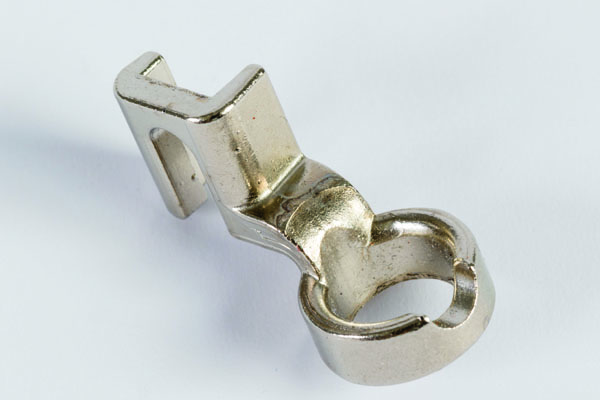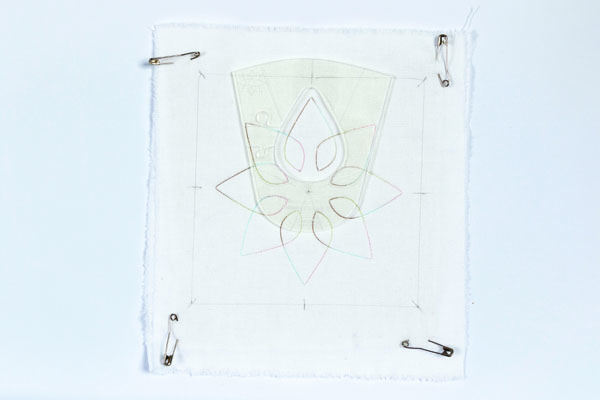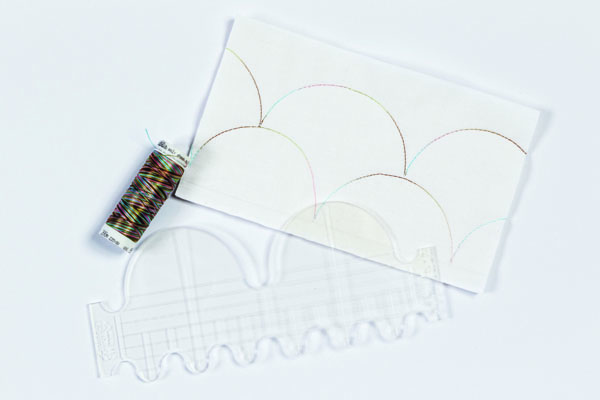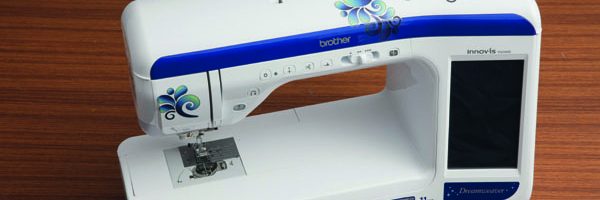
Trial a product: Westalee Ruler Foot and Stencils
For many years, longarm quilters have been using acrylic quilting stencils and special machine feet to do elaborate and precise quilting designs, but until recently, this wasn’t possible on domestic sewing machines. At last, that’s all changed, thanks to the Westalee ruler foot and dedicated 3mm stencils. By Elizabeth Newton
So how does it work?
The Westalee Ruler Foot is a complete circle with a diameter of 1/2in, meaning that when the needle is in the centre position, you are sewing 1/4in from the edge of the foot. If you place a stencil on the quilt sandwich and sew alongside it – or inside it in the case of ones with holes – the round foot glides around the stencil’s shape quite easily.
The Westalee Ruler Foot true 1/2in round ruler feet come in adjustable low-, medium and high-shank styles to suit most domestic sewing-machine models (with the exception of slant-shank machines).
They’re designed for free-motion quilting using Westalee Ruler Foot range of 3mm stencils – the shank on many domestic machines when lowered would hit the 6mm/1/4in stencils used on longarm machines, severely limiting their usability.
Create a quilt with different precut fabrics!
Most of the stencils can be used to create a variety of quilting designs. Some of them are rotated around a central pin for block designs while others are more linear. Before you start, it’s recommended to spend a bit of time familiarising yourself with the process by watching the informative YouTube videos on the Westalee website.
Some experience with free-motion quilting is assumed. In our testing, both rotating and linear stencils were used.
 Spinning Wheel 36 design
Spinning Wheel 36 design
The Spinning Wheel
The Spinning Wheel design measures 51/2in in diameter when stitched out fully, making it ideal for 6-7in blocks. In the seam allowance of the block, locating marks were drawn, as well as a dot at the centre. It’s important to use an erasable marker.
A drawing pin is inserted up through the centre point of the block and goes through a tiny hole in the stencil. This allows the stencil to rotate from that one point, delivering an extremely accurate design, even on the first try.
Katrina Hadjimichael’s Jelly Friends quilt will help you use up your precut fabrics in no time.
All the stencils have markings to assist with precise placement. However, should your accuracy be a tiny bit off, the videos demonstrate how to compensate.

Clamshell stencil CC2-H design
Clamshell Stencil
The clamshell stencil measures 3 x 7in and has curves along two sides to create 11/2 x 3in clamshells or smaller 1/2 x 1in clamshells. To work the pattern over a wide area, you simply move the stencil along the baseline when you’ve stitched from one end of it to the other.
Second and subsequent lines of curves are offset against the first row to create this popular design. It’s a good idea to practise to get a feel for this stencil before you start on a quilt.
Claire Turpin’s Cotton Candy Carousel cushions are the perfect addition to a little girl’s bedroom!
Our verdict
All our testing was done on reasonably small samples, which is easy to manoeuvre on a standard domestic machine, and the results were very good.
Hence, quilting beautiful designs on projects such as table runners, small wallhangings and mini quilts, as well as larger quilt-as-you-go projects should be very doable indeed. (Large bed-size quilts are always a challenge to manoeuvre on domestic machines.)
Hundreds of different sizes and shapes of stencils are available, expanding your repertoire of quilting styles and providing a great alternative to freehand designs or the overused stipple.
The low-shank ruler foot, Bernina adapter and six-piece template sampler set for our tests were supplied by Westalee, www.westalee.com.au


